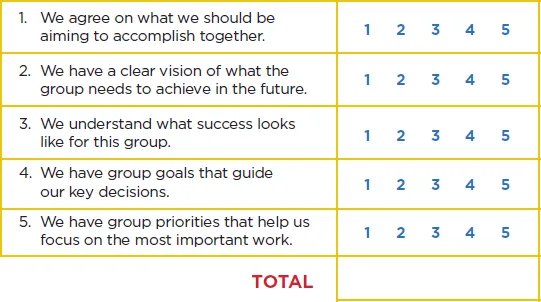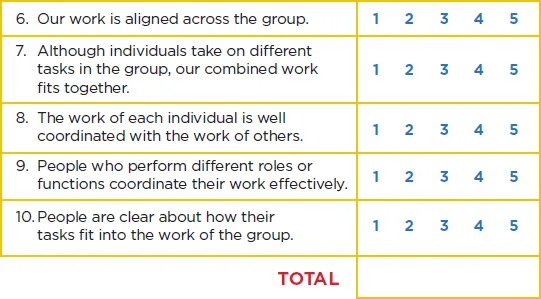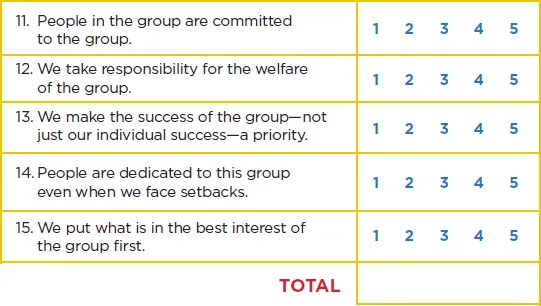
eBook - ePub
Direction, Alignment, Commitment: Achieving Better Results Through Leadership
Cynthia D McCauley, Cooper
This is a test
Share book
- 34 pages
- English
- ePUB (mobile friendly)
- Available on iOS & Android
eBook - ePub
Direction, Alignment, Commitment: Achieving Better Results Through Leadership
Cynthia D McCauley, Cooper
Book details
Book preview
Table of contents
Citations
About This Book
If your team isn't getting results, you may think the problem starts with a failure in leadership. While the person in charge may have issues, a leadership problem doesn't necessarily mean you have a "leader" problem. Leadership is not just about the people at the top, but is a social process, enabling individuals to work together as a cohesive group to produce collective results. This book will show you how to diagnose problems in your team by focusing on the three outcomes of effective leadership: direction, alignment, and commitment. By assessing where your group stands in each of these outcomes, you can plan and implement the changes necessary to get better results.
Frequently asked questions
How do I cancel my subscription?
Can/how do I download books?
At the moment all of our mobile-responsive ePub books are available to download via the app. Most of our PDFs are also available to download and we're working on making the final remaining ones downloadable now. Learn more here.
What is the difference between the pricing plans?
Both plans give you full access to the library and all of Perlego’s features. The only differences are the price and subscription period: With the annual plan you’ll save around 30% compared to 12 months on the monthly plan.
What is Perlego?
We are an online textbook subscription service, where you can get access to an entire online library for less than the price of a single book per month. With over 1 million books across 1000+ topics, we’ve got you covered! Learn more here.
Do you support text-to-speech?
Look out for the read-aloud symbol on your next book to see if you can listen to it. The read-aloud tool reads text aloud for you, highlighting the text as it is being read. You can pause it, speed it up and slow it down. Learn more here.
Is Direction, Alignment, Commitment: Achieving Better Results Through Leadership an online PDF/ePUB?
Yes, you can access Direction, Alignment, Commitment: Achieving Better Results Through Leadership by Cynthia D McCauley, Cooper in PDF and/or ePUB format, as well as other popular books in Business & Leadership. We have over one million books available in our catalogue for you to explore.
Information
STEP 1:
ASSESS CURRENT LEVELS OF DIRECTION, ALIGNMENT, AND COMMITMENT IN THE GROUP
ASSESS CURRENT LEVELS OF DIRECTION, ALIGNMENT, AND COMMITMENT IN THE GROUP
Let’s start by examining three groups struggling with DAC outcomes.
The board of a state-focused foundation whose mission is to improve the health of its underprivileged citizens is creating a new five-year strategic plan. As the board evaluates the impact of the foundation’s grants over the last five years, several board members express concerns that the foundation might be headed in the wrong direction. While some of the individual programs the foundation funds have resulted in impressive successes, the board hasn’t seen enough improvement on overall health indicators for the underprivileged. Every board member supports the foundation’s mission, and while the board feels good about what the foundation has achieved across the state, they wonder why the results don’t reflect greater impact. Does the foundation’s overall direction need to change radically to get the results they hope for? Some members seem eager to embrace a new direction; others are feeling the need to be more cautious.
Gabriela is serving on a cross-functional team designing and implementing an onboarding process for all new employees. Team members know what they are trying to achieve; they worked together to craft a team charter that everyone supports. They’ve put in place a plan to accomplish the work and assigned specific tasks to each team member. However, the team is falling behind its timelines and Gabriela is worried. Sometimes the team seems unclear about who is responsible for what, and they have to revisit and clarify assignments. She also has noticed that the team gets bogged down when trying to reconcile different ideas about how best to design some aspects of the overall process. She doesn’t think the team has a direction problem, but are they struggling with aligning their work?
Deon is the project manager for a new product development team responsible for developing the next big innovation in the organization’s most important product line. The team has extensive market research into customer needs, representatives from critical organization departments, and a substantial budget for prototyping and testing. Unfortunately, the team is experiencing extensive quality issues with the first prototype they sent to market testing. At each of their last three team meetings, at least 1–2 members have been absent due to schedule conflicts or competing deadlines. Since none of the team members report directly to Deon, he struggles with how to get the group to commit the time and effort required to address the quality issues so that the team can achieve its goals.
When you find yourself in similar situations, concerned about whether individuals are pulling together in ways needed to succeed as a group, it is time to step back and assess the degree to which the group has the DAC it needs. Use the statements in the following “DAC Assessment” to complete a systematic assessment of DAC in the group. Better yet, have everyone in the group rate each of the statements and combine answers. Getting this broader input from group members is particularly important if you are the formal leader of the group. Your position in the group can skew your perspective! For instance, you may be less likely to sense a direction problem because you had a hand in setting the direction.
DAC ASSESSMENT
Instructions: On a scale of 1–5, indicate the extent to which each of the following statements describes the way things stand right now in the group. The terms we, our, everyone, and people in the statements refer to members of the group. Once you’ve rated the individual statements, add up your ratings in each section to yield total scores for direction, alignment, and commitment.
This assessment is also available at www.ccl.org/dac.

DIRECTION

ALIGNMENT

COMMITMENT

There are a number of ways to gather DAC assessment data from group members that keeps their identity anonymous (which encourages honest responses), and combines their data into a group-level summary for the entire group to review:
• Distribute paper copies of the assessment and have group members return it to a central person who tallies the data for the group.
• Create an online survey and send the link to group members. The survey package typically will produce a group summary of the data.
• Ask group members to complete the assessment and bring it to a group meeting. The assessment sheets can be gathered, shuffled, and randomly redistributed. Individuals can then transfer the data from the sheet they received to a wall chart that allows the group to see the whole group’s data.
Group members can complete the assessment at www.ccl.org/dac and bring the printed results to a group meeting.
Whichever process you use, the goal of this assessment step is to identify whether any or all of...